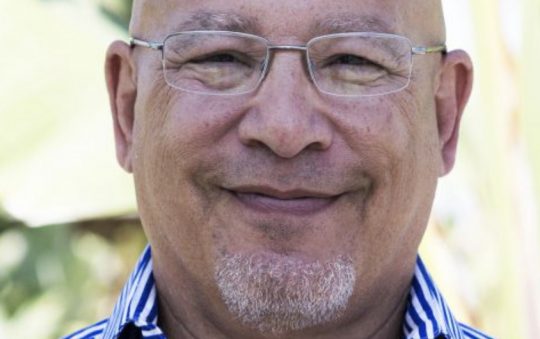
There are still a few months left until the start of the New Year, which leaves most of us with plenty of time to think about our resolutions for the coming year. But for water districts across the state, the new year has already begun. October marks the start of the 2017-2018 water year, which runs from October to September, and marks the period over which California water agencies measure the year’s precipitation levels.
The new water year is not unlike the holiday we celebrate in January. Those tasked with ensuring our communities have access to water begin each new water year with a set of goals and resolutions that they hope to achieve. At West Basin Municipal Water District, our primary goal every year is to provide a safe and reliable supply of high-quality water to the communities we serve. While achieving water reliability – which means access to uninterrupted sources of clean drinking water – has long been our mission, this year we’re inviting the community to help us realize it.
So where do we start, and how can the community be a part of this effort? First, we must envision what everyday water reliability looks like and understand where our water comes from.
Like many of our neighboring counties, a majority of the water that West Basin supplies – currently 55 percent — is sourced from Northern California and the Colorado River. If these places seem far, it’s because they are. Our water travels a long way to make it to our drinking cups and bath tubs. This can be worrisome. Not only are imported water supplies susceptible to the changing climate but they’re vulnerable to natural disasters like earthquakes. Reasons like these illustrate why water reliability is becoming increasingly important. Reducing our dependency on faraway sources increases our local reliability, but because we are still so dependent, it is important to invest in key infrastructure to ensure local delivery.
The warmer weather is a sign that our Southern California climate is becoming hotter, dryer and more unreliable. Achieving water reliability would protect our communities from the effects a drying climate can have on our drinking water supplies. The key to mitigating these effects is diversifying our water supply sources. A big part of what West Basin has done to reduce our dependency on imported water, which can still be considered unreliable, is develop local water conservation and recycling programs. While these programs have helped us produce more quality water for the community and brought us closer to achieving water reliability, more can be done to make this a reality.
It’s important to take a step back and ask ourselves, “Do we know the value of our water?” Annual campaigns like Imagine a Day Without Water, taking place on October 12th, and West Basin’s Water Harvest Festival on October 14th, raise awareness about the value of water and how water impacts our everyday lives.
During the drought, residents in our communities from Rancho Palos Verdes to Inglewood reduced their time in the shower, transformed their lawns, and limited excessive use of water. If we shift our mindset to consistently consider conserving a limited resource, not just during times of drought, we can make significant progress in increasing our water reliability.
As much as water reliability programs are important to securing water sources for ourselves and future generations, it requires investment from the community to use water wisely. In this new water year, make a resolution to learn more about how your water is delivered to you and how to make your home more water efficient. We can all play a part in achieving water reliability for our community.
Gloria D. Gray is the Division II Director of the West Basin Municipal Water District (West Basin) Board of Directors. She represents the city of Inglewood and unincorporated Los Angeles County areas of South Ladera Heights, Lennox, West Athens, and Westmont. Gray is also one of two West Basin representatives to serve on the Metropolitan Water District Board of Directors, where she currently serves as a Vice Chair of the Executive Committee and the Chair of the Water Planning and Stewardship Committee.






